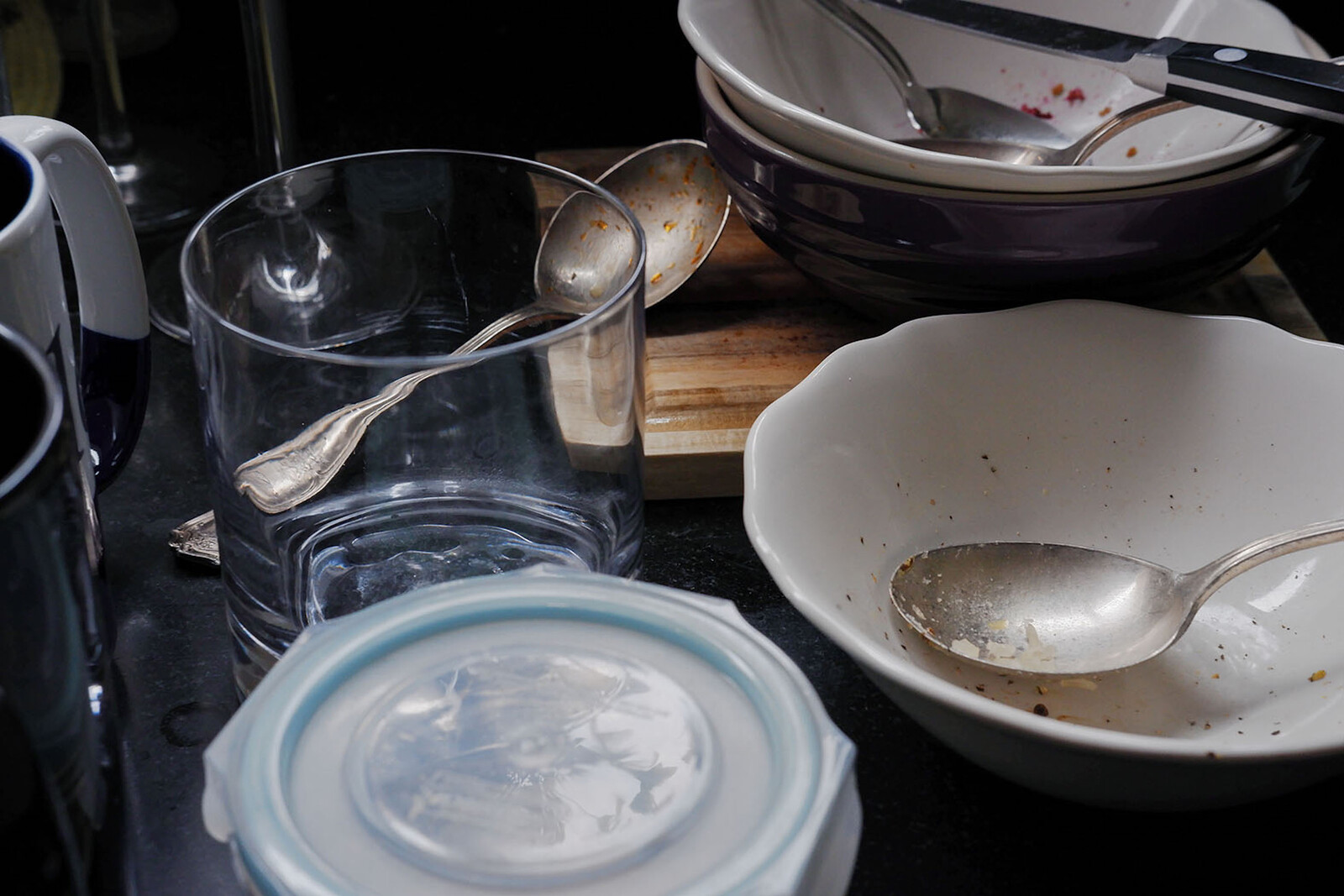During the lockdowns, Teju Cole turned to cooking. From September 28 to November 3, 2020 (the date of the US presidential election), Cole’s kitchen became his photographic subject. But instead of documenting elaborate freshly plated meals, Cole’s images show the juxtaposing edges of pots and pans, cutting boards, and dirty spoons resting on the stove. The sequence of oddly cropped images illustrates the social and global politics held in our food, cooking habits, and household items.
Best known as a novelist and essayist, Cole is also the author of photobooks including Blind Spot (2017), which drew on his Instagram practice of pairing photographs from his travels with long prose captions. But Golden Apple of the Sun departs from this format, instead presenting photographs of his countertop without adjacent texts (save the date and time stamp on the top margin of each page), sequenced with brown pages showing faded handwritten recipes reproduced from an eighteenth-century cookbook. The images and recipe pages are followed by a lengthy text without paragraph breaks, a meandering musing on Cole’s thinking behind this project, which encompasses the history and politics of the still-life genre—particularly the Dutch vanitas—and his own relationship to food and hunger.
While the essay is dense, historical, and full of personal reflection, the images themselves are simple and stark. Void of people (though Cole’s looming figure is sometimes reflected in the silver sugar bowl), the pictures have an uncanny quality with dark rich colors, printed on heavy matte paper that absorbs the ink. They are not the traditional bouquets of food centered on a glistening platter, nor the contemporary social media food photo. Food is present—a sprig of thyme in a silver pot or half a slice of lemon resting on a cutting board—but it’s not the focus. The images read as though the main character—Cole himself, or perhaps the unnamed “you” to which his essay is addressed—has just stepped out of the frame, and will return to pick up his spoon if we wait long enough. More interesting than what is missing from this sequence of countertop scenes is what is present. Cole’s photographs make characters out of everyday utensils: a blue-and-white spoon rest with a palm tree, a plain square wooden cutting board. The items start to tell stories: soft blue patterns on the rims of dishes, bowls, and dishtowels reveal a western minimalist design aesthetic. A cast iron pan suggests a desire for luxury cooking items; the plastic spatula resting against it suggests a laziness about seeing that desire through.
Captured at a moment of global unrest, this focus might seem like a denial of sorts, a refusal to face the realities at hand. But Cole invests his domestic objects with political and personal history by placing them in the context of the eighteenth-century still-life tradition of colonialist plunder: “We see abundant citrus, in a land where it struggles to grow. There is almost always Ming porcelain, but we are not in China,” he writes. “The world is contained in these paintings, but not only contained, owned.” In the contemporary moment, this calls to mind how our food reaches us ordinarily and in times of crisis. Who has the luxury to have groceries delivered, and who has to deliver them? While the vanitas tradition uses food, and its inevitable consumption or spoil, to illustrate the ephemerality of life and indulgence of excess, Cole’s uncluttered images show a different kind of ephemerality. Even when these surfaces are used and dirty, they are not messy, demonstrating the privilege of leisure time to stay home, to cook with preparation (slicing a lemon or a fresh apple, carefully measuring flour), and to clean (or pay someone else to clean) a kitchen.
“Thinking of the lives of still lives, I think about how objects outlive us, of how moving this can be,” Cole writes. He alludes to the still-life genre as a kind of autobiography, forcing us to consider what is at the edges of our own stories: what histories lie within our possessions, and what our uses of them reveal about us. Like the sugar bowl in which he appears, our things always reflect us.
Teju Cole’s Golden Apple of the Sun was published by MACK in July 2021.

